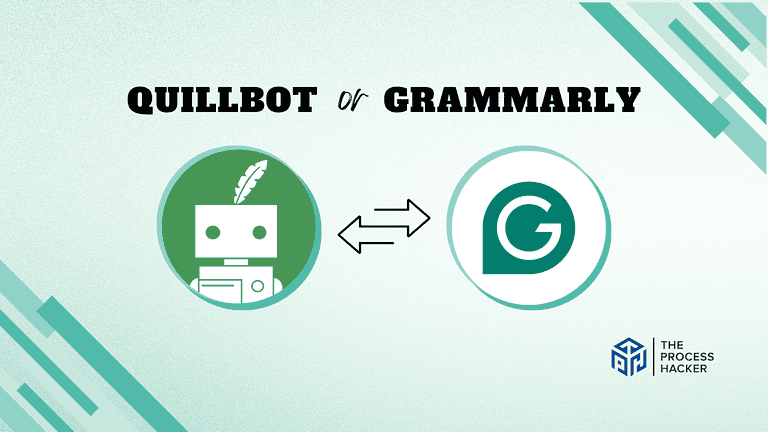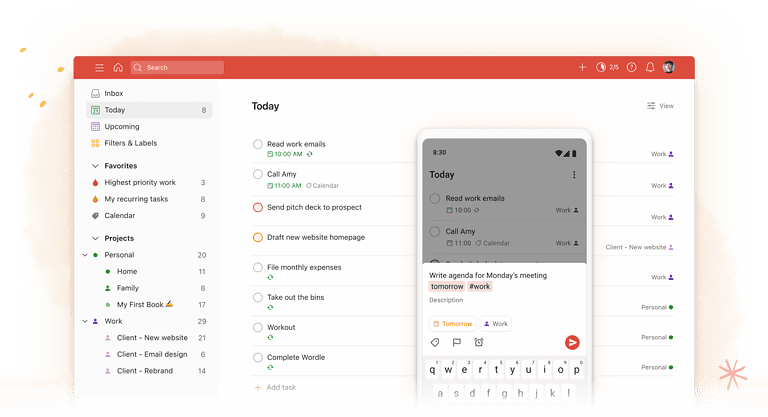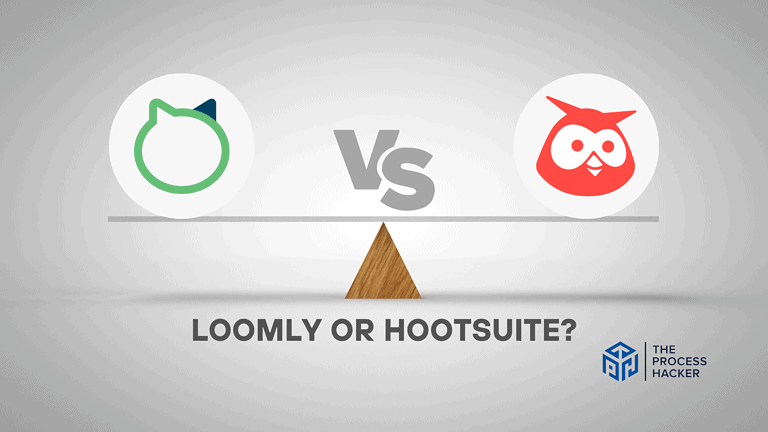Obsidian Review 2024: Best Note-Taking App?
Are you an entrepreneur who is always on the go? Do you find yourself drowning in bookmarks and “To-Do” lists written on whatever scrap of paper comes to hand?
If so, you need a great personal knowledge management software tool to use wherever life takes you.
If you purchase through our partner links, we get paid for the referral at no additional cost to you! For more information, visit my disclosure page.
You should check out Obsidian as it is an incredible note-taking software that will make jotting down notes never simpler or more efficient.
So, what are the advantages and disadvantages of Obsidian over other note-taking applications? Keep reading this Obsidian review for 2024 and find out!
Obsidian Pros & Cons
When considering a note-taking app, it’s essential to weigh Obsidian’s pros and cons against your specific needs and preferences to make the right decision.
Pros
Cons
Obsidian Pros
- Boosts Productivity: Obsidian lets you keep all your notes and ideas in one place. This organizational structure can help you stay focused on tasks and improve productivity.
- Enhances Learning: With its unique linking feature, Obsidian encourages active learning. You can create connections between different notes, helping you understand and remember information better.
- Customizable Interface: Obsidian offers a customizable interface. It’s not just about aesthetics; you can set up your workspace to suit your workflow best, making you more efficient while working.
Obsidian Cons
- Slight Learning Curve: While Obsidian is pretty intuitive, getting used to all its features might take some time. But once you’re familiar with them, you’ll appreciate their flexibility.
- Requires Regular Maintenance: To keep your knowledge base effective, Obsidian demands regular maintenance and organization of notes, which might be a consideration for those with limited time.
Quick Verdict – Is Obsidian Worth the Money?
After hours of research and testing Obsidian for my note-taking needs, it is worth the money.
Obsidian stands out in its unique approach to linking thoughts and ideas, fostering a network of knowledge that grows with you. Its vast customization options allow you to tailor the experience to your workflow.
Moreover, as a personal experience, it has transformed how I manage and interact with my notes, making learning and information retention more intuitive and enjoyable.
You might think Obsidian is another note-taking app in a saturated market, but it’s not. Its unique linking feature and customization options make it stand out, making it one of the best knowledge management tools in the market. Plus, considering the value it provides, it’s reasonably priced.
It would be unfair not to mention in this Obsidian review that there is a slight learning curve when you first start using the app. However, you’ll appreciate its flexibility and productivity benefits once you get the hang of it. Also, its mobile app could be improved, but it’s still functional for on-the-go note-taking.
If you’re looking for a note-taking app that can boost your productivity and enhance your learning, give Obsidian a try! You won’t be disappointed.
Who is Obsidian for?
You’ll love Obsidian if:
- You’re a lifelong learner who loves connecting the dots between different pieces of information. Obsidian’s unique linking feature lets you create a network of related notes, making it easier to see the bigger picture and deepen your understanding.
- You prefer having control over how your digital workspace looks and feels. With Obsidian, you can customize your interface to your heart’s content, creating a personalized environment that boosts your productivity.
- You’re a writer or researcher who needs to manage a lot of information. Obsidian’s powerful search and tagging features make organizing and retrieving your notes easy, no matter how many you have. The Obsidian Sync lets you have all your notes on all devices, allowing you to work whenever, wherever.
You won’t love Obsidian if:
- You’re looking for a simple, no-frills note-taking app. Obsidian offers many advanced features, which can feel overwhelming if you only need a place to jot down quick thoughts.
- You need the time or inclination to learn how to use a new app. While Obsidian is very powerful, it does have a learning curve. It may be frustrating if you’re not willing to invest some time into learning its ins and outs.
- You prefer using traditional pen and paper. Obsidian is a digital app, so it simply won’t work in this case. Instead, I would recommend checking out The Bullet Journal Method, which is a system to help you do traditional note-taking.
What is Obsidian?
A powerful, markdown-based note-taking application that excels in creating a network of your thoughts. It’s like having a second brain where all your notes, ideas, and research are interconnected.
What is the key benefit of having Obsidian?
The key benefit of Obsidian lies in its unique approach to linking notes, which allows you to see and develop relationships between different ideas and concepts. This interconnected structure makes it an ideal tool for in-depth learning, research, and complex project management.
How does Obsidian work?
Obsidian lets you write notes in Markdown, a simple and versatile text formatting language. It includes features like backlinking, graph view, and custom plugins, which help you visualize the connections between your notes and extend the app’s functionality to suit your needs.
How is it different from competitors?
What sets Obsidian apart from other note-taking apps is its emphasis on building a knowledge base rather than just storing information. Unlike linear note-taking apps, Obsidian is designed for non-linear thinking, enabling a more organic development of ideas.
This feature, coupled with its high customization capability and community-driven plugin ecosystem, makes it stand out in knowledge management tools.
Reasons I Recommend Obsidian to Everyone
#1) Interconnected Learning
One of the best features of Obsidian is its ability to link notes together, creating a web of interconnected information. This not only organizes your notes but also transforms the way you learn.
By actively forging links between different pieces of information, you’ll enhance your understanding and memory recall. From personal experience, this approach makes studying more engaging and effective.
#2) Tailored to Your Needs
Obsidian’s high degree of customization is another reason for my recommendation. You can adjust your workspace to suit your needs and preferences, ensuring a comfortable and productive note-taking environment.
For instance, I’ve tailored my Obsidian interface to have a dark theme with large, easy-to-read text, significantly reducing eye strain during prolonged study sessions.
#3) Always Accessible
Obsidian stores your notes in plain text files on your local drive, which means they’re always accessible and editable, even without the Obsidian app. Unlike many other apps, this gives you unprecedented control and ownership over your notes.
Additionally, this feature ensures that you won’t lose access to your notes if something happens to the app. This aspect is particularly reassuring, as it guarantees that all the time and effort I invest into my notes will never be wasted. With its Obsidian Sync feature, You can access all your notes on different devices.
What You Might Not Like about Obsidian
#1) The Learning Curve Can Be Steep
Obsidian’s strength lies in its complexity and versatility, which can also be a drawback for new and free users. The learning curve can be steep, especially if you must familiarize yourself with markdown language or non-linear note-taking systems.
This might mean a slower start and initial frustration as you navigate its features and customization options. It took me some time to become comfortable with the interface and effectively use the link and graph view features.
#2) Overwhelming Number of Community Plugins
While the vast array of community plugins for Obsidian can be seen as a strength, it can also be overwhelming. With so many plugins available, it can take time to identify which ones will genuinely enhance your note-taking experience.
Exploring, installing, and learning how to use these plugins effectively can require significant time. Personally, I’ve spent more time than I’d like sorting through plugins and figuring out how to integrate them into my workflow.
Obsidian Pricing
Obsidian cost depends on a range of options. The app has a free version for personal use, providing accessibility for anyone wanting to organize their thoughts and ideas. However, if you’re using Obsidian for commercial purposes, the cost starts at $50 per year.
For those interested in extended features like Obsidian Sync, Obsidian Publish, and early access to new features through Catalyst, add-on services pricing applies per month.
Obsidian: Key Features Breakdown

Let’s break down the key features of Obsidian and delve into the details of each feature:
Note-Taking App
Obsidian is a powerful note-taking application that operates on Markdown files. It’s more than just a simple note-taking tool; it’s a personal knowledge base designed to adapt to your thoughts. This feature makes it flexible and customizable, allowing you to link different notes and create a unique information network.
Obsidian can work on a local folder of plain text Markdown files. This means your notes aren’t stored in a proprietary database but in a universally accessible format. This gives you complete control and ownership of your data, a benefit not always offered by other note-taking apps.
Creating internal links between notes can help you see connections you hadn’t previously considered. It’s like having a second brain that remembers and links everything for you. Plus, the fact that my data is stored in a format that you have complete control over provides an invaluable peace of mind.
Bidirectional Links
Bidirectional links are connections created between notes that work in both directions. For example, if you link note A to note B, you can navigate from note A to note B and vice versa. This creates a web of interconnected information that you can navigate freely.
The magic of bidirectional links lies in their ability to create a network-like structure of your notes rather than a linear or hierarchical one. This allows for a more organic flow of ideas and thoughts, mirroring how your brain naturally makes connections.
Bidirectional links can revolutionize the way you organize and connect ideas. They allow you to see patterns and relationships between different pieces of information that you might not have noticed otherwise.
The result is a more comprehensive understanding and retention of the knowledge you are working with. This feature can be particularly useful in complex projects where various pieces of information are interconnected.
Knowledge Graph
The Knowledge Graph visually represents the network of your notes and their interconnections. It’s a map that displays all your notes as nodes and the links between them as lines.
The specialty of the graph lies in its ability to provide a bird’s-eye view of your ideas. Instead of reviewing each note individually, you can see how all your thoughts and ideas are connected at a glance. This enables you to spot patterns or gaps in your knowledge that you might have missed otherwise.
The Knowledge Graph can make navigating your notes easier and add a new dimension to my thought process. Visualizing the connections between different ideas can help you generate new insights and deepen your understanding of various topics. It’s like having a visual aid to your thinking process, helping you see the bigger picture.
Canvas
The Canvas in Obsidian is a space to edit, visualize, and create notes. It’s more than just a blank page; it’s an interactive environment allowing you to graphically manipulate your notes and their connections.
What makes the Canvas special is its ability to give you a visual representation of your notes. You can move them around, organize them in clusters, and see how they relate to each other at a glance. This is not just about aesthetics; it’s about enhancing your understanding and recall of information.
The Canvas changes the way you interact with my notes. Instead of scrolling through long lists of text, you can now easily see your ideas, making it easier to spot connections or gaps in your knowledge. This feature makes your note-taking process not only more efficient but also more enjoyable.
Plug-ins
Plug-ins can be added to the app to enhance its functionality. They range from simple aesthetic tweaks, like changing the appearance of your notes, to more complex functions, like creating automatic data backups.
What sets plug-ins apart is their ability to customize Obsidian to your liking. You can tailor the app according to your needs and preferences, making it your personalized note-taking tool.
Speaking from experience, plug-ins can significantly enrich your note-taking process. You can add features that suit your workflow and discard those that don’t. This results in a more efficient and enjoyable note-taking experience.
For instance, a plug-in that automatically creates a table of contents for your notes can make navigation more accessible and faster. This level of customization makes Obsidian stand out from many note-taking apps.
FAQs about Obsidian
How can I get help with Obsidian?
You can find support resources, report issues to the Obsidian team, and learn how to make the most of Obsidian through their official help site.
Can I use Obsidian on multiple devices?
Yes, Obsidian Sync lets you have all your notes on multiple devices. This means you can access and edit your multiple notes from anywhere, at any time.
Is Obsidian secure to use?
Obsidian values user privacy and does not upload your notes to its servers. All your notes are stored locally on your device, ensuring their security.
What are Obsidian plug-ins?
Obsidian plug-ins are tools that can be added to the app to enhance its functionality. They allow you to customize the app according to your needs and preferences.
Is the Obsidian Vault free?
Yes, the Obsidian Vault is a free version of the add-on. It acts as a central storage system where your notes reside, allowing the creation of a personal knowledge database. It supports the distinctive note-taking strategy of Obsidian, including bidirectional links and a graph view to visualize relationships between notes.
Final Verdict – to Buy Obsidian or Not to Buy Obsidian?
After hours of research and testing for this comprehensive Obsidian review, I highly recommend Obsidian as a note-taking app.
Its innovative features and the ability to customize your workspace using plug-ins make it a standout choice.
The proof lies in the features we’ve discussed. The Canvas allows you to visualize and manipulate your notes, enhancing your understanding and recall of information. The plug-ins allow customization, enabling you to create a note-taking environment that aligns with your workflow.
However, it’s worth noting that Obsidian lacks certain features found in other note-taking apps, such as collaboration capabilities. Obsidian may not be your best bet if you’re looking for an app to collaborate on notes app with a team.
But if you’re seeking a robust, customizable note-taking tool for personal use, Obsidian is worth considering. Its free plan offers a comprehensive feature set, making it a risk-free option to explore.
So, why wait? Give Obsidian a try today and experience a new way of taking notes.
In the next section of this Obsidian review, we’ll explore some alternatives to Obsidian for those searching for different features in a note-taking app.
Obsidian Alternatives
If $50 is too much for you to stomach right now or you need a different solution, you might like one of these alternatives.
#1) Notion
Notion presents itself as a more versatile workspace compared to Obsidian. It integrates note-taking with project management and collaborative tools, making it ideal if you’re looking for an all-in-one organizational tool. Notion’s rich content embedding and robust real-time collaboration features make it superior for team projects.
However, Obsidian still holds the edge for individual knowledge management and the unique linked-thinking approach. Notion suits those who want a collaborative, multimedia-rich environment, offering a more structured organization than Obsidian’s flexible linking system.
#2) Coda
Coda is one of Obsidian’s free alternatives, combining document creation with spreadsheets and applications. It’s more dynamic than Obsidian, offering interactive elements like buttons and sliders, making your documents function like apps.
Coda is better for interactive project management and creating dynamic documents. Further, it blends text, data, and interactive elements in one place. Conversely, Obsidian excels in personal knowledge management and in-depth note-linking.
#3) Evernote
Evernote has long been a staple in the note-taking app market. It’s more straightforward than Obsidian, focusing on traditional note-taking and organization. Its superior features include robust multimedia support and excellent cross-platform syncing.
Evernote is less about creating an interconnected web of notes and more about straightforward note capture and retrieval. Unlike Obsidian’s complex web of knowledge, it’s a perfect choice if you prefer simplicity and a more traditional, hierarchical approach to note organization.
#4) Mem AI
Mem.ai is a note-taking app that leverages AI to automatically connect and present relevant information, minimizing the need for manual organization and prioritizing a user-friendly interface. However, its functionalities are limited compared to Obsidian, which offers extensive customization options and a vast plugin ecosystem for tailoring the app to your specific needs.
While Obsidian’s flexibility empowers users, it also comes with a steeper learning curve and can become cluttered if not managed carefully. Ultimately, the choice between these tools depends on whether you want simplicity, customization, or other specific features.
#5) Logseq
Logseq is a knowledge management tool that is gaining popularity in the market. It is similar to Obsidian in many ways, but it has its own unique set of features that make it stand out.
The main difference lies in its support for incremental writing which allows you to keep adding to a page over time, making it easier to build up a rich knowledge base over time. In addition, it offers graph visualization and a note-taking feature that is simple and intuitive to use.











